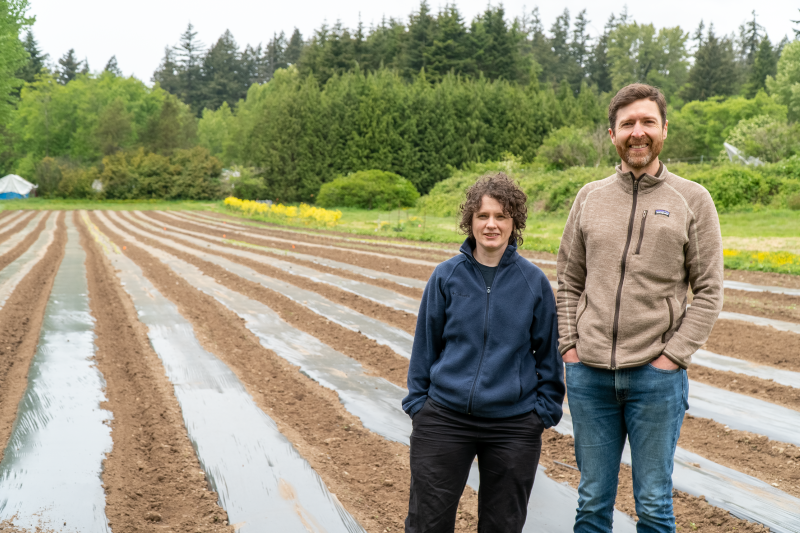“High performance computing is and will be the future of science because we have so much data. We’re in a data revolution.”
Laura Super, PhD Candidate, UBC Faculty of Forestry
How do they use ARC for their research?
Dr. Mitchell uses ARC for biodiversity monitoring at the UBC Farm on Point Grey campus. He monitors wild species on the UBC Farm to understand the biodiversity of the site and how it is changing due to climate warming and land use change. He uses automated technology and microphones to monitor the overall farm soundscape as well as individual bird and bat calls. Two microphones at the farm run 24/7, capturing all the sounds around them: Birds, insects, frogs, people, cars, construction. One additional microphone picks up ultrasonic sounds to monitor bats, specifically.
Specialized software can cluster these sounds to determine if they are acoustically similar and identify bats from the calls. This work is computationally intensive, and if Dr. Mitchell ran it on his own laptop, it would take days, maybe weeks, because the data sets require terabytes of storage. With ARC Sockeye, he can process data faster and can adjust the data and settings as he goes, re-running computations if needed. ARC Chinook, a storage platform, allows him to store data in a secure location.
Super has used ARC in two capacities: the first was as a work learn student and then as a Mitacs graduate student internship with Dr. Mitchell and involved monitoring bird and bat sounds. She continues to collaborate with Dr. Mitchell; they are now working on further analyses with the goal of publishing. The ARC team wrote custom code to help her run ecoacoustics software on multiple ARC cores, which led to higher-speed data processing.
She also uses ARC to analyze microbial data from plants for her PhD under supervisor Dr. Robert Guy, with a focus on phytobiomes and soil microbiomes. Each plant can be thought of as its own biome, a phytobiome; a phytobiome is a plant plus its associated organisms (such as birds, insects, bacteria, fungi, etc.) and the environment. This is an exciting new field that can benefit from fast computation of large sets of data. “We are really moving forward in science toward open data, reproducible data,” says Super.
What questions are they trying to answer?
Both researchers are asking longer-term questions around how climate change impacts the world around us. Are species and phytobiomes changing? What changes in the temporal patterns of bird and bat species are we noticing over the years? How do extreme weather events such as the intense wildfire smoke of September 2020 or the heat dome of June 2021 affect local wildlife?
Super is also looking at microbial data and asking questions about how climate change and other factors affect plant performance and microbiome composition. Using ARC with open-source data from the continental U.S., she looks at soil microbial data, and she has data from her own field and lab work on how shoots, roots, and soil microbiomes and phytobiomes are related to things like climate and natural variability. She uses next-generation DNA sequencing to understand broad patterns.
Imagining the future of ARC
Dr. Mitchell can still remember when his family got their first computer and he only became well-versed in programming in graduate school. He encourages others without such technical skills to seek out services such as ARC, as the ARC team provides comprehensive support regardless of the level of user expertise. He believes that more disciplines will be able to seamlessly use ARC in the future.
For Super, she believes there is an opportunity for more faculty, staff, graduate, and undergraduate students to explore ARC, perhaps through modular training. “High performance computing is and will be the future of science because we have so much data. We’re in a data revolution.”
About Advanced Research Computing
The ARC Sockeye platform is offered free of charge to the UBC community. It offers nearly 16,000 CPU and 200 GPUs for UBC researchers across all disciplines. Projects with advanced research computing requirements generally involve big data, large computational power, modelling or visualization that cannot be handled by standard computing infrastructure alone.
For more information and to apply for an allocation, visit the UBC ARC website.
